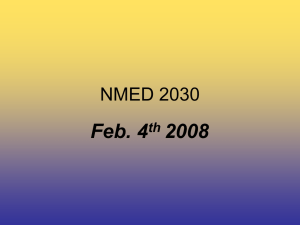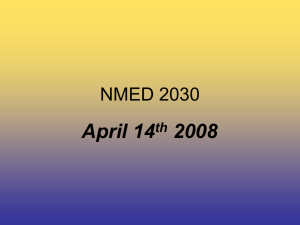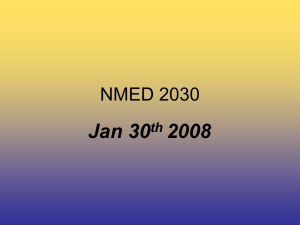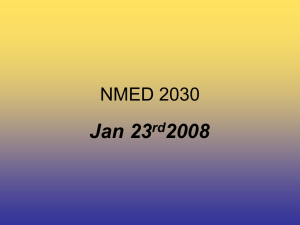NMED 2030 The Art of the Critique
advertisement
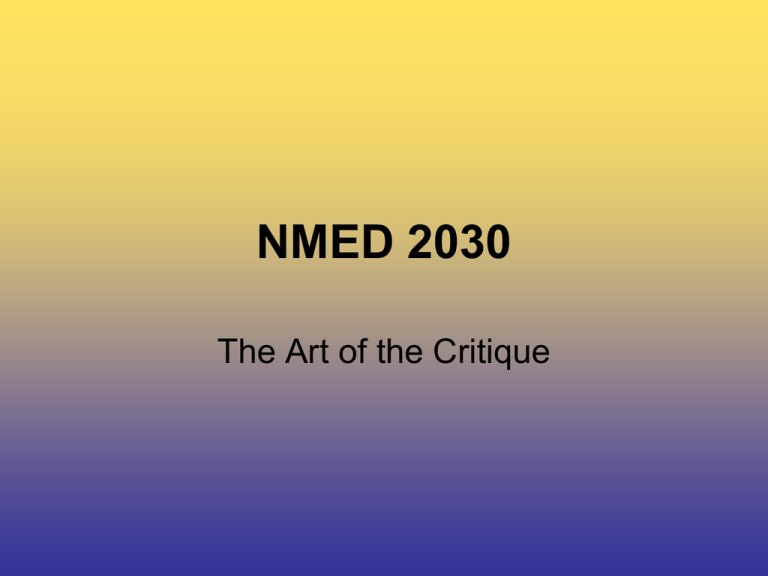
NMED 2030 The Art of the Critique NMED 2030 The Critique As outlined in the course outline, critiques are worth 15 % of your final grade NMED 2030 • What is a critique ? – – The art critique is a method of organizing the facts and your thoughts about a particular work of art or creative product. Specific, constructive comments will help not only the director whose work it is, but also other directors participating in the critique. NMED 2030 • The Art Critiquing Process is broken down into FOUR areas. – Description – Analysis – Interpretation – Judgment NMED 2030 • Description • Often the first thing you do when you look at a work of art is to say "I like it" or "I think that is a terrible piece of art!" It is very difficult not to jump to your opinions first. • Description simply means to describe the picture. Tell what you see. Talk about the subject, the medium and any information you have gotten from reading the Credit Line, if there is one. This is NOT the place to add your opinions. You must be objective, like a detective who is surveying the scene of a crime and writing down only what she sees. NMED 2030 • Analysis • Analysis is the second step of the critiquing process. In this section you will answer the question: How is this work organized? Using combinations of these, the artist creates the mood of the work or expresses a particular point of view or message. • Analysis is where you will express your thoughts about what the message of the artwork is. What idea does this work represent? This section relies on your knowledge of the Components of Design reading and to articulate in an intelligent manner the information or clues you see in the work. NMED 2030 • Interpretation • Interpretation is the “anything goes” part of the critique. It is here that you will ask yourself “What does this work say to me?" However, these should be able to articulate, or express yourself intelligently and respectfully using words, and provide insightful comments. • Interpretation is very personal. Understand that your interpretation of a work may differ greatly from someone else's. Just as people are different, so are our interpretations. NMED 2030 • Judgment • Judgment is an important part of the critique process. Here you can express your opinion. What do you think about this piece of work? Is it successful? Do you like it? You should be able to give some reasons as to why you like or do not like a work of art. • Is a particular work of art successful? This is the question you must ask yourself during this final step in the critique process. Does the work have artistic merit? Everyone is going to have reasons for liking or disliking a work of art. Saying "I think this is good art" is not enough. NMED 2030 • The Critique – If you followed the four steps of the art critiquing process, you can probably explain why you like the work. – How you value a work of art is a personal judgment. But, it is important that you recognize the importance of works of art and how they represent the world in which we live. NMED 2030 • Art Critique Questions • l. What stands out the most when you first see/hear it? • 2. Explain the reason you notice the thing you mention in number 1. • 3. Describe the feelings and meanings/tone this work represents? NMED 2030 • • • • Art Critique Questions 4. Is this story composed with intention ? 6. Do you understand the story? 7. What production details suggest clues about the style used by this director? NMED 2030 • Art Critique Questions • 7. What could the director have done to make the work stronger? • 8. What other things interest you about this work?
